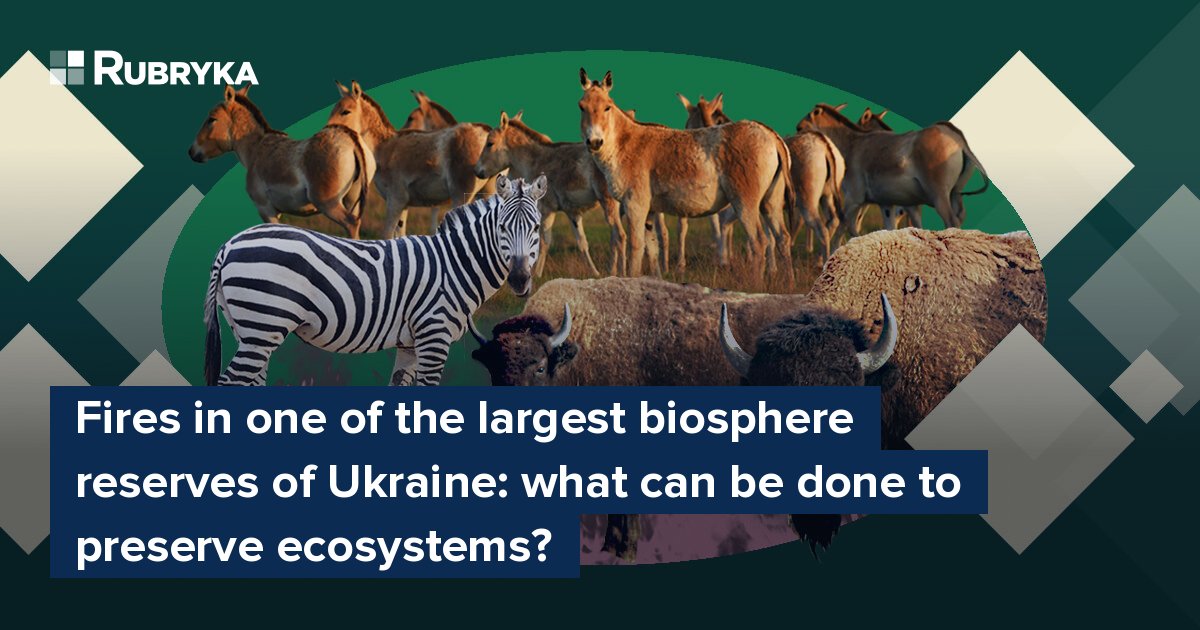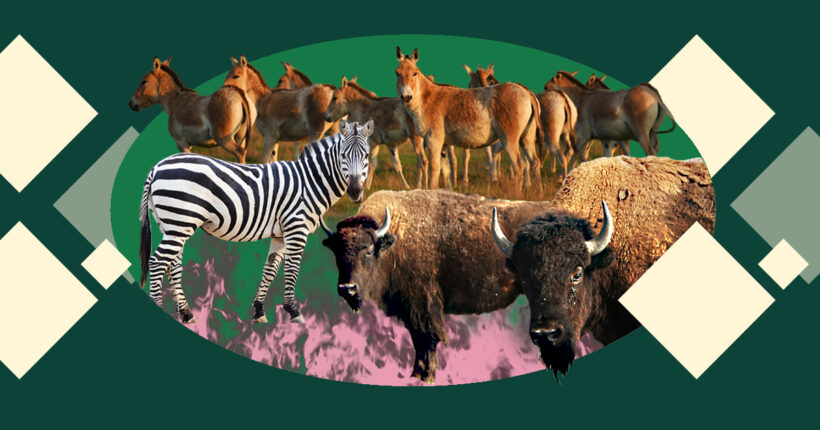
Since the first day of Russia's full-scale invasion of Ukraine, the Askania-Nova biosphere reserve in the Kherson region has been under occupation.
Since October 2022, Russian military equipment and armed formations, personnel, and fortifications have been built on the reserve's territory, and aircraft constantly fly by — such activity is strictly prohibited in the airspace over such facilities. All this has created a considerable stress factor for animals and, of course, makes the routine work of the environmental protection institution impossible.
However, despite the occupation, the reserve managed to function as a Ukrainian institution for the first 13 months of the war. The management did not make agreements with the Russians, and the protected steppe, the zoo's animal collections, and the arboretum were preserved.
What is the problem now?
Russian administration and new risks

Birds in Askania-Nova. Photo: Facebook Falz-Fein Biosphere Reserve "Askania Nova"
On March 20, 2023, the occupying power appointed its own administration and established actual control over Askania-Nova. Since then, the risks for Askania have become much greater since there are no real levers of influence on the course of events in the institution and the life support processes of the collections in the Ukrainian regulatory and legal field.
According to the Ukrainian Nature Conservation Group, new threats were added by the August-September fires. According to satellite images, during the last one, which occurred on September 1 due to a lightning strike, 1,790 hectares of protected steppe burned. This fire has so far become the largest that occurred in the reserve during the occupation.
The responsibility for the consequences of the fire and the damage caused to the ecosystem of the protected steppe lies entirely with the occupying administration. The Ukrainian administration of the reserve comments on its official Facebook page: "Although a lightning strike caused the last fire, its spread could have been prevented by a sufficient 200-meter-wide firebreak provided by the fire prevention measures (only a 100-meter-wide strip was mowed). According to eyewitnesses, the previous fire was caused by the launch of a missile by the Russian military aircraft over the protected territory, although the occupation administration promptly reported on the 'found wreckage of an unknown artillery system of Ukrainian origin.'"
How much burned: two, three, or seven thousand hectares of Askania-Nova?
The reserve's Facebook page reported that the fire that occurred on September 1 is the seventh that has happened in Askania-Nova since the full-scale invasion of the Russian Federation.
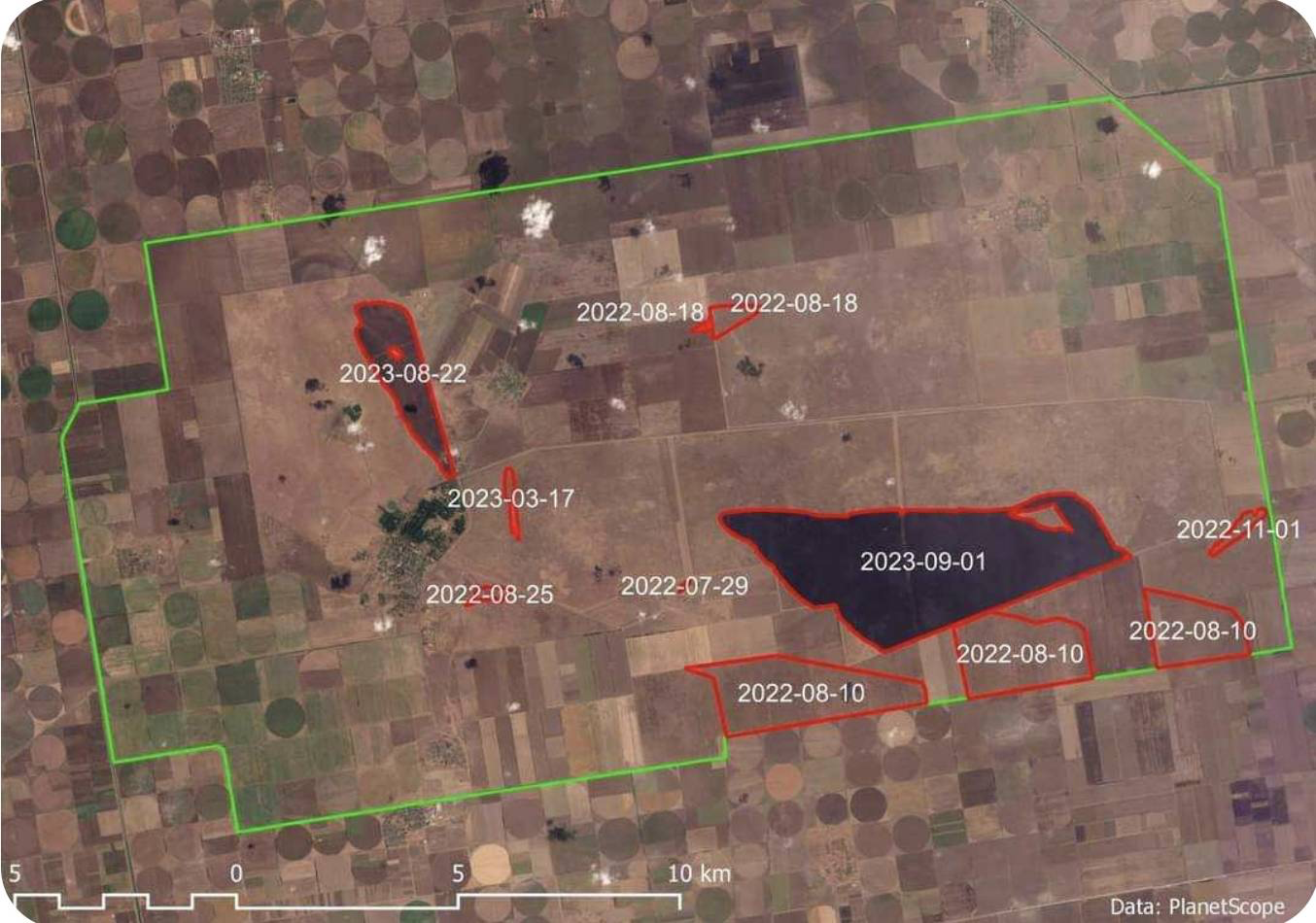
Areas of Askania-Nova where fires were detected. Photo: Facebook Askania Nova Military Administration
However, before that, news about 7,000 hectares of burned land was actively spread in the mass media — misinformation was spread by the press service of the Ministry of Environmental Protection and Natural Resources of Ukraine.
In fact, during the period of occupation, the fire destroyed more than 3,500 hectares of the reserve — more than a tenth of its entire area. The Ukrainian Nature Conservation Group mentioned the figure, the reserve confirmed it, and later, Viktor Shapoval, the current director of Askania-Nova, repeated it in a personal conversation with Rubryka.
The fact that most of the fires —2,208.62 hectares — are on the land of a protected zone, where vegetation formations grow, listed in the Green Book of Ukraine that contains data not about specific plants but about entire groups.
"Fires in the buffer zone and the zone of anthropogenic landscapes took place in agrocenoses — these are weedy fallows and stubble of crops," they state at the reserve. "Instead, all burned areas within the protected zone occurred precisely in the steppe biotopes, which are the main natural value of Askania-Nova and the benchmark of the steppes of the Black Sea region."
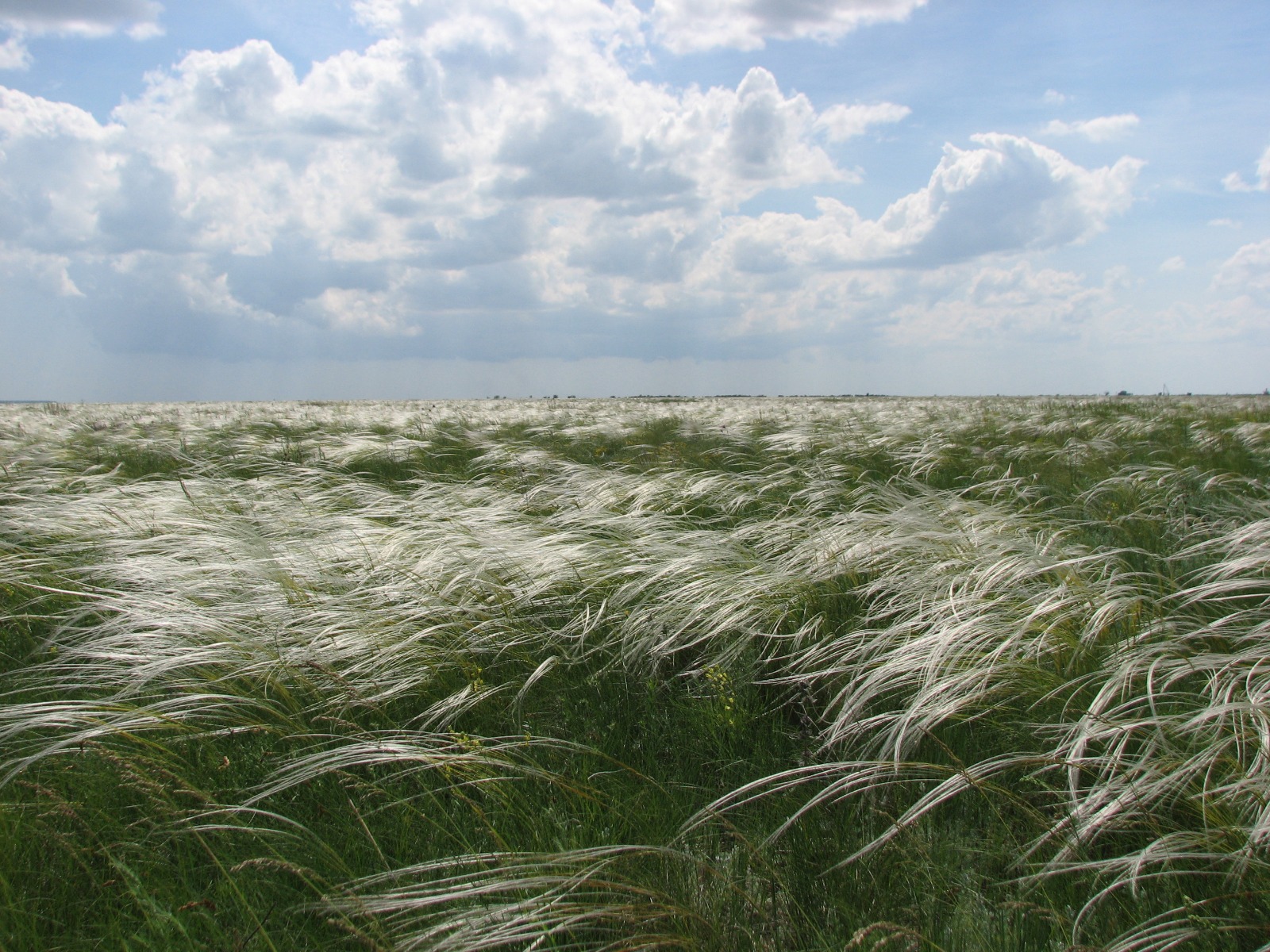
The plot, Stara, was bequeathed by F.E. Falz-Fein in 1898. Photo: Facebook Biosphere Reserve Askania-Nova named after F.E. Falz-Fein
Areas that have been protected for a century were affected: Stara, protected since 1898, and Uspenivka, which has been protected since 1927. In addition, this entire territory is part of the Emerald Network of Ukraine and has a UNESCO Certificate as part of the Man and the Biosphere Program.
Unique collections may be lost
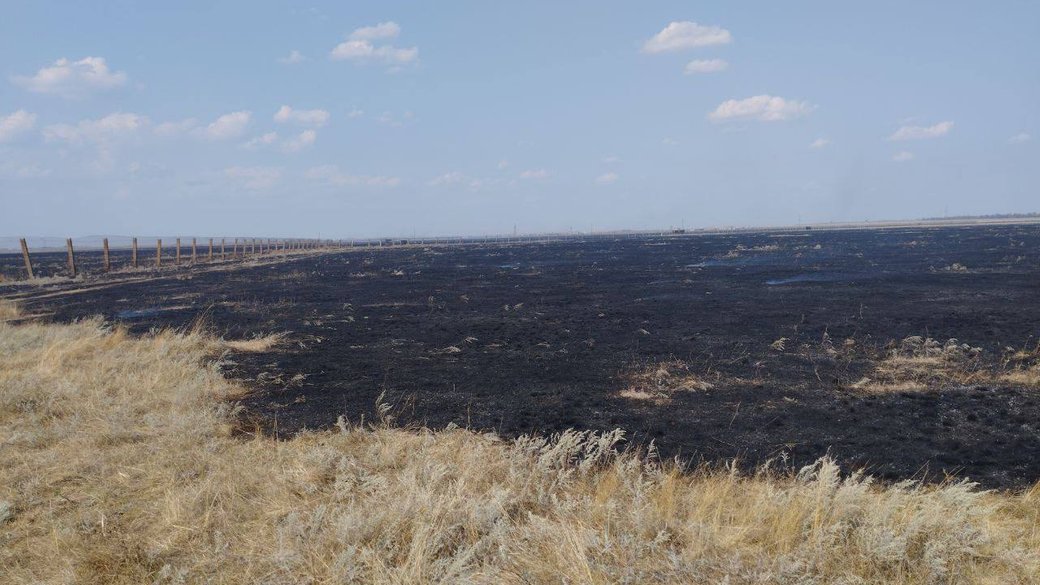
Kherson region. Askania-Nova. Burnt protected steppe, August 22, 2023 Photo: Propaganda channel Tavria. News of the Kherson region/Telegram
No less terrible consequence — the fire struck the Velykyi Chapelskyi pid. In this area, which is periodically filled with meltwater in the spring, the highest indicator of the diversity of flowering plants in the reserve is registered. The territory is so valuable that it was included in the wetlands of international importance, protected under the Ramsar Convention, and included in the special Resolution of the Bern Convention as a new biotope type.
"Given the dates of the last large-scale fires at the end of the growing season, most of the annual plants have already completed their growing season, a large part of the perennials, in particular rare ephemeroids (Hesner's tulips, Scythian tulips), were in a semi-dormant state. In addition, the dominant species of Stipa listed in the Red Book of Ukraine were not destroyed, but only lost their above-ground part," says the reserve director.
Disappearance of plants is not the biggest problem of Askania-Nova

Ungulates in the reserve. Photo: Facebook Biosphere Reserve Askania-Nova named after F.E. Falz-Fein
According to Shapoval, the problem of vegetation burning is not the biggest problem caused by fires. In particular, fires in Velykyi Chapelskyi Pid carry great risks for ungulates. It is here that the collection of animals, which has the status of National Treasure of Ukraine, is kept: "The territory is fenced off, and in the event of its complete burnout, the animals will not have the opportunity to get out and move to a safe zone," says Shapoval.
Large-scale fires also affect entomofauna (insect species), which cannot actively and early avoid dangerous areas, unlike birds or mammals. It is this faunal group that suffers the most.
Great damage is caused by fortifications, trenches, explosions, and other actions of the military, which disturb the soil cover and create belligerent landscapes (landscapes created as a result of military actions).
"This is what really destroys the steppe. If not forever, then for decades," says Shapoval.
What is the solution?
Maybe a fire is not a disaster?
"Actually, for the steppe ecosystem, a fire is not a disaster when the entire massif does not burn out," Shapoval comments on the question of the danger of fires for the reserve's ecosystems.
According to him, fires are a natural phenomenon that occurs relatively often in the steppes. A lightning strike can cause them, and the steppe ecosystem is generally adapted to this. First, only the above-ground part of plants is damaged during a fire, and perennial species can recover from underground organs. Secondly, the seed bank remains in the soil, which allows plants to continue to exist on the territory.
Therefore, there is no need to specially restore this vegetation — in the next favorable course of events.
"By and large, recovery will be spontaneous. In fact, even in the pre-occupation period, Askania suffered many fires, and the vegetation recovered," Shapoval gives hope.
It is still impossible to name the exact time frame for restoration — everything depends on many factors and their interaction, but in any case — the vegetation will recover. Detailed information about the direction and dynamics of changes will be available only next year after the renewal of vegetation.
What needs to be done now?
Information is collected remotely, with the help of satellite images, because no specialists in the reserve could conduct a direct visual examination of the fires.
Although part of the staff of the institution still remains in the uncontrolled territory, Shapoval calls most of these people hostages of the situation:
"The occupation administration warns these people of fairly severe sanctions for transmitting any information. However, we understand the general picture and the course of events in the institution. Part of the data is obtained using remote monitoring (as in the case of fires, mowing, etc.). Meanwhile, the occupation administration, trying to imitate certain positive developments, publishes news itself," says Shapoval.
Those employees of the biosphere reserve who can perform their work functions remotely and are in the controlled territory are paid a salary, and the institution receives budget allocations for protected expenditure items. Some employees have been actively helped by the Ukrainian Nature Conservation Group since the spring of 2023, providing them with material support.
Therefore, donations to the army to speed up the liberation are only one way to help Askania-Nova so far. You can also do that on the UNCG website.
Another way to help Askania is to participate in other initiatives. For example, in charity fairs organized by scientists to raise funds for their colleagues.
Newsletter
Digest of the most interesting news: just about the main thing


